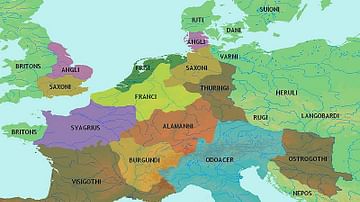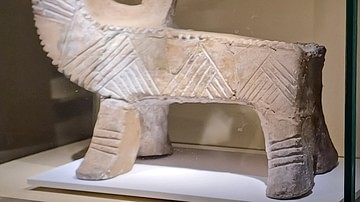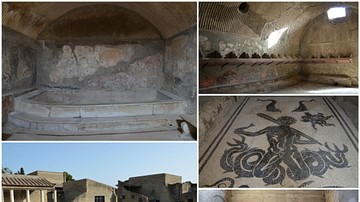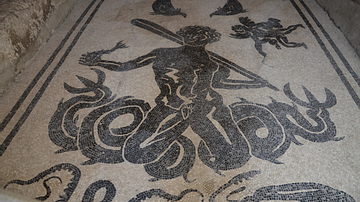Illustration
Replica of a 16th-century earthenware stove with decorative tiles from around Šenkvice.
Slovak National Museum, Bratislava.
Central European clay stoves emerged in the late medieval period as an evolution of the traditional dome-shaped ovens, which were typically built directly onto the ground. While the earlier ovens were multifunctional, serving purposes such as baking, cooking, drying, and heating, the new clay stoves were designed primarily for heating large indoor spaces like halls and chambers in grand private buildings, including mansions, castles, and palaces. One of the most notable features of these stoves is the decorative tiles, which often depict various forms of iconography and can be helpful in dating the stoves. The earlier tiles showcase a wide range of themes, including scenes of cavalry romances, folkloric stories, games, hunting, and biblical narratives, as well as images of animals, architectural elements, geometric patterns, and floral motifs. From the mid-16th century onwards, floral designs became increasingly prevalent as more complex narrative illustrations began to fade from popularity.
About the Author
Photo Location
This photograph was taken at the following location:
References
- (PDF) Stove-tiles of Transylvania and Banat from the Beginnings up to the Year 1700 (English abstract) | Daniela Marcu Istrate - Academia.edu, accessed 6 Dec 2024.
Cite This Work
APA Style
Choubineh, N. (2024, December 10). Clay Stove from Central Europe. World History Encyclopedia. Retrieved from https://www.worldhistory.org/image/19757/clay-stove-from-central-europe/
Chicago Style
Choubineh, Nathalie. "Clay Stove from Central Europe." World History Encyclopedia. Last modified December 10, 2024. https://www.worldhistory.org/image/19757/clay-stove-from-central-europe/.
MLA Style
Choubineh, Nathalie. "Clay Stove from Central Europe." World History Encyclopedia. World History Encyclopedia, 10 Dec 2024, https://www.worldhistory.org/image/19757/clay-stove-from-central-europe/. Web. 16 Apr 2025.








